- Partager sur Facebook
- Partager sur Twitter
- Share on Linkedin
- Send by mail
- https://www.inshs.cnrs.fr/fr/international-research-project-2023

International Research Project 2023
L’appel à projets 2023 des International Research Project dans le domaine des sciences humaines et sociales est ouvert jusqu’au 5 mai 2023, 17h.
Qu'est ce qu'un IRP ?
L’outil de coopération internationale IRP ( International Research Project ) finance un projet de recherche collaborative entre des partenaires français et des partenaires d’un ou deux pays étrangers ayant déjà démontré leur capacité à collaborer ensemble.
Il a une durée de 5 ans et permet de fédérer une équipe pouvant à terme participer à des appels à projets européens et internationaux.
Les crédits alloués annuellement à l’unité porteuse du projet, d’un montant maximal de 14 000€, financent l’organisation de rencontres scientifiques en France et dans les pays des partenaires (ateliers, séminaires scientifiques ou écoles thématiques) et la mobilité des équipes impliquées.
- Une partie des financements (maximum 20% par an) peut être utilisée pour d’autres dépenses.
- Aucun salaire ne peut être pris en charge sur les crédits alloués par le CNRS à l’IRP.
- Les partenaires français et étrangers peuvent abonder le budget de l’IRP.
Critères d’éligibilité
- La coordination du projet
L’IRP doit être porté par une unité du CNRS (UMR ou UAR).
Le coordinateur / la coordinatrice peut être indifféremment un.e chercheur.e ou un.e enseignant.e-chercheur.e, membre permanent rattaché.e à cette unité. Les personnels non-permanents (doctorants et post-doctorants notamment) ne peuvent pas coordonner un IRP.
- Le consortium
Le consortium doit inclure des partenaires étrangers ( on notera que les unités du CNRS à l’étranger - UMIFRE, IRL et UAR à l’étranger - sont considérées comme des partenaires français du consortium).
Critères pour la composition du consortium :
- Localisation des équipes : maximum de 2 pays étrangers impliqués (mais plusieurs partenaires d’un même pays peuvent participer au projet)
- Nombre d’équipes : maximum de 10 équipes impliquées, qui devront donner leur accord sur la constitution du consortium
- Historique du réseau : les partenaires doivent déjà avoir collaboré par le passé
Une attention particulière sera apportée aux projets en lien avec les thématiques suivantes :
- inégalités (y compris les inégalités de logement) menaçant la cohésion sociale et territoriale
- inclusion socio-économique et politico-civile des migrants
- vieillissement des populations et dépenses de protection sociale (questions liées aux retraites, santé et soins de longue durée).
Etape 1 : pré-proposition
- Date limite de soumission : 5 mai 2023, 17h
- Résultats étape 1 : mi-juin 2023
Etape 2 : projet complet
- Date limite de soumission : 18 septembre 2023, 17h
- Résultats de l’arbitrage final : novembre 2023
Date de début indicative des projets sélectionnés : 1er janvier 2024
Comment soumettre une pré-proposition ?
La pré-proposition doit être rédigée selon les consignes données ci-après et adressée par courriel en format pdf au pôle Europe et International de l’InSHS ( [email protected] ) en indiquant dans l’objet du courriel : Candidature IRP – Nom du coordinateur – Sigle du projet.
Des questions ?
Télécharger ci-contre de la page la fiche des questions fréquemment posées (FAQ).
Contactez le Pôle Europe et International de l’InSHS : [email protected] .
International Research Project (IRP) : étapes
Etape 1 - Pré-proposition
Formulaire de dépôt auprès de l’InSHS
La pré-proposition doit obligatoirement comporter les éléments demandés ci-dessous, organisés comme suit.
Le texte peut être rédigé en anglais ou en français.
1. Fiche projet : 1 page
Précisez :
- Le titre du projet
- L’acronyme du projet
- Les nom, prénom et section CNRS du coordinateur / de la coordinatrice
- Le nom et le code du laboratoire de rattachement du coordinateur / de la coordinatrice (UMR ou UAR)
- La liste du ou des deux pays partenaires du projet
- Le cas échéant, le caractère interdisciplinaire du projet (en précisant le numéro de la ou des sections CNRS impliquées)
2. Projet scientifique : 2 pages
Exposez en 2 pages maximum l’objectif de l’IRP, la plus-value que représente la réalisation de ce projet scientifique en collaboration avec les partenaires choisis, les activités envisagées, les résultats attendus. Des schémas peuvent être intégrés.
3. Consortium
Présentez de manière synthétique les partenaires de l’IRP, en mettant en évidence les collaborations antérieures entre les équipes impliquées.
Pour chaque partenaire , indiquez le nom de l’unité (centre de recherche, département, etc.), sa ou ses tutelles, le nom du coordinateur / de la coordinatrice local.e et le nombre de chercheurs qui seront impliqués dans l’IRP (en distinguant doctorants, post-doctorants et chercheurs titulaires). Une présentation sous forme de tableau peut être intégrée.
4. CV : 1 page
Insérez en fin de dossier un court CV du coordinateur / de la coordinatrice du projet (1 page maximum).
TÉLÉCHARGER CI-CONTRE DE LA PAGE L'APPEL IRP
Les autres opportunités, fabriquer la ville avec l’art et la culture plaine commune – msh paris nord, pfas : enjeux et alternatives, parcours doctoral national en santé travail - appel à candidatures contrats doctoraux 2024, appel du programme usp-cofecub.
Restez informé avec l'INSHS
Découvrez les actualités de l’Institut des sciences humaines et sociales

Research projects

International Research Network on Postcolonial Print Cultures (IRNPPC)
The International Research Network on Postcolonial Print Cultures, funded by the CNRS (2023-2027) with additional funding from the University of Chicago Center in Paris (2023-25) brings together scholars working in the fields of postcolonial studies and literatures, book and art history, print and material cultures, from 8 different institutions : the CNRS, the University of Chicago, Newcastle University, University of the Witwatersrand, NYU and NYU Abu Dhabi, Jadavpur University and the Center for Studies in Social Sciences in Calcutta.
Scholars of the IRNPPC are interested in the production, circulation, and consumption of print as an agent in social, cultural, and political life, and look at the practices, institutions, and networks that have shaped writing, reading and publishing in colonial and postcolonial contexts.
The network aims at developing a comparative and transnational framework to understand how genres, forms and actors long considered ‘footnotes of literary history’ (periodicals and newspapers, tv and radio broadcasts, pamphlets, advertising material etc.) have in fact been instrumental to the development of literary cultures in the Global South, instrumental forces of postcolonial and decolonial struggles, and sites of North/South and South/South transnational exchanges.
Veridicality, Rhetorical Tropes, and Epistemic Vigilance in On-line Communication: Semantic and Pragmatic Underpinnings
This project will examine what semantic and pragmatic conditions must be met for an individual to recognize that a claim made online requires investigation and cannot be taken at face-value, as well as what epistemic conditions must be met for individuals making genuine truth claims to anonymous collectives. Using methodologies from linguistics and from the philosophy of language, the team will examine whether or not social media reshapes what users consider “evidence” to be, what specific interactions between evidence and truth arise in a social media environment that do not arise in normal speech, and what kinds of evidence serve to form the basis of judgements of truth value and trustworthiness.
Funded in part by the UChicago-CNRS PhD Joint Program , this project is being led by Anastasia Giannakidou , Frank J. McLoraine Professor in the Department of Linguistics at the University of Chicago, and Alda Mari , Director of Research at Institut Jean Nicod, Paris.
France-Arizona Institute for Global Grand Challenges
The university collaborates with the French academic community to foster best-in-class international research, focusing on the grandest challenges faced by science and society. Our mission spans all disciplines – humanities, sciences, and the arts.
UArizona is the first CNRS International Research Center
At the core of the cooperation is our partnership with the French National Center for Scientific Research, or CNRS, the premier research institution in France. With more than 11,000 scientists and laboratories and offices around the globe, CNRS ranks in the top 4 academic institutions for research worldwide. UArizona was chosen by CNRS as its first International Research Center (IRC), CNRS's highest level of institutional cooperation. The IRC program aims to bridge disciplines to advance and scale up transformative research and revolutionary solutions for sustainability and resilience. Signed into existence on April 14, 2021, the IRC is the heritage and renewal of a rich history of collaboration between the CNRS and UArizona .
In May 2023, we sat down with the Ph.D student Clara Randimbiarimanana to learn more about her research and how it has been enhanced by travel to France with the France-Arizona Institute - CNRS joint Ph.D. program.
Read her story, in the spotlight: ongoing projects.
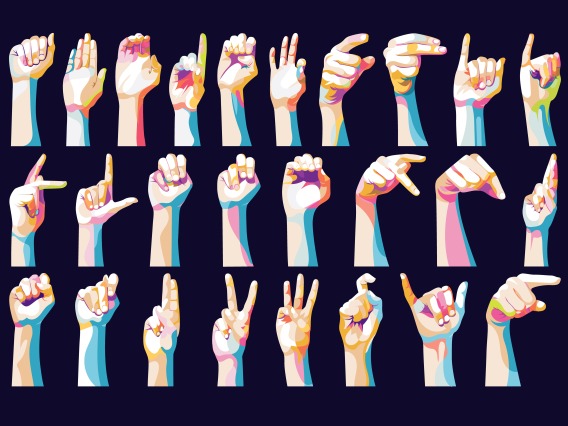
2023 Joint PhD Project
Meaning, gesture, and sign in Mesoamerica

2022 Joint PhD Project
Investigation of atmoSpheric cloud-Particle Interactions with cross-disciplinary student Research Experiences
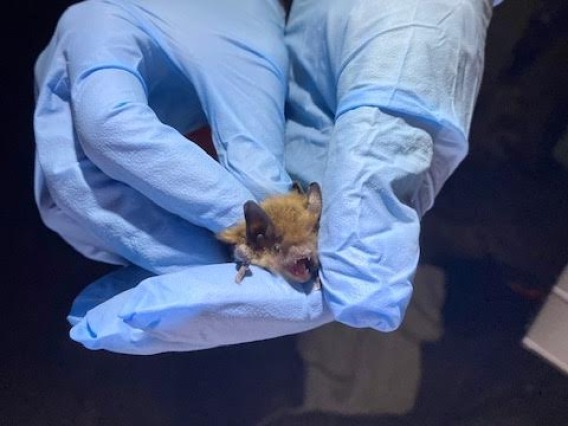
2021 Joint PhD Project
Molecular and functional genomics of ancient viral epidemics
FA Institute News
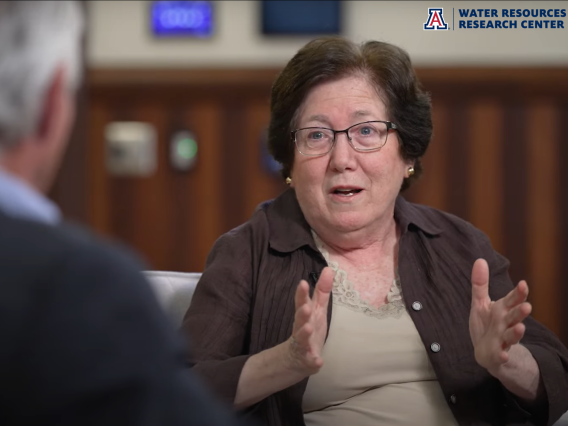
WRRC Video - Understanding Our Water Future in Arizona with Sharon Megdal
Robert C. Robbins speaks with Professor Sharon Megdal, Director of the Water Resources Research Center at the University of Arizona, about the Colorado River Basin's water crisis and the future of our state. Dr. Megdal explains that our water crisis will not be solved by any one action. It will take a multi-faceted approach beginning with all of us being informed – knowing where our water comes from, knowing who makes water policies and what those policies are, and what we can do in our daily lives to conserve water.
Large-scale agrivoltaics, a solution for the sustainable future of food, energy and water
In September 2022 the IRC science committee met in Paris and identified three global grand challenges for the partnership to tackle: “Habitability in our future: What Makes A World Fit For Life, and How to Keep it That Way“, “Preparedness to Planetary Challenges: Climate change and Health” and “Integrated Food-Energy-Water Solutions at Scale”. Since then, all three axes are being actively developed. A recent workshop was organized, from April 25 to 27, 2023, at the Biosphere 2 Center of UArizona to address the third one, with a focus on “Agrivoltaics At Scale” as one such integrated solution for a just and secure future of food, energy, and water.
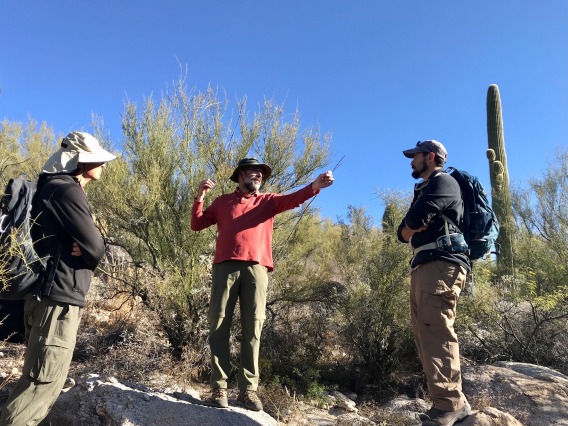
New Life: Growth and Collaboration After the Bighorn Fire
In the summer of 2020, the Bighorn fire ravaged the Santa Catalina Mountains, burning over 120,000 acres at the edge of Tucson, Arizona. In the wake of such destruction, it was hard to imagine new life emerging from the ashes. But nearly three years later, as green shoots are starting to peek out their heads even in the most burned areas, so too are new ideas blossoming among ecological researchers. Two of them, Dr. Ben Wilder and Dr. Michael Canva, are gleaning innovative research from the disaster.
UArizona News
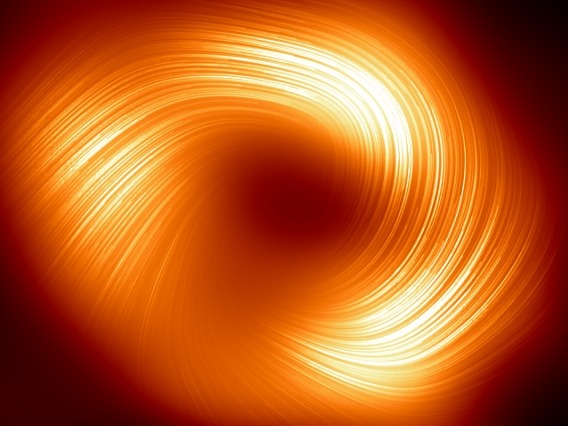
Astronomers capture magnetic fields twirling around black hole
A new view of the supermassive black hole at the center of the Milky Way obtained by the Event Horizon Telescope collaboration revealing its magnetic field structure suggests that the processes by which black holes feed and eject jets into their surroundings may be universal among black holes despite vast differences in size and mass.
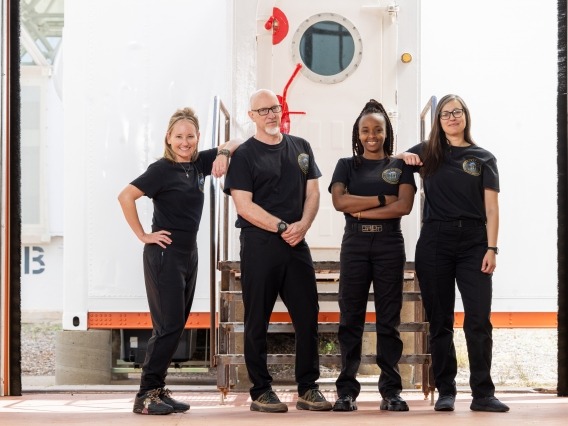
UArizona crew of professional artists completes simulated moon mission
The goal of the six-day simulation, called Imagination 1, was to explore the value of art in space exploration and produce creative works inspired by the limitations and possibilities of life and culture beyond Earth.

Webb telescope takes its first images of forming planetary systems
The observations will help astronomers refine their theories about the processes involved in planet formation and shed light on what our sun did when it was very young.
Stay connected Subscribe to our Newsletter
- Your profile
- Recruitment
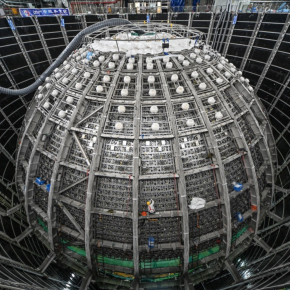
- Share on FaceBook
- Share on Twitter
- Share on Linkedin
- Send by mail
- https://www.cnrs.fr/en/update/china-looks-europe-its-forthcoming-scientific-collaboration-initiatives
China looks to Europe for its forthcoming scientific collaboration initiatives
The October 2023 visit to CNRS headquarters by three Chinese scientific delegations demonstrated China's desire to resume and intensify cooperation with France and Europe as a whole.
From October 17 th to 19 th 2023, the CNRS headquarters were placed under the sign of China. On the 17 th , Marie Gaille, the director of CNRS Humanities and Social Sciences, welcomed her counterparts from the Chinese Academy of Social Sciences (CASS), a leading Chinese academic organisation in the humanities and social sciences. The next day, Antoine Petit, the CNRS Chairman and CEO, received the visit of the National Natural Science Foundation of China (NSFC), China's main funding agency for basic research. Finally, on the 19 th , Antoine Petit and Jianguo Hou, the President of the Chinese Academy of Sciences (CAS) - China's leading scientific institution and one of the world's foremost research institutions - signed the renewal of the framework agreement that has provided for collaboration between the two organisations since 1978.
CAS, CASS, NSFC: three major research stakeholders in China
The Chinese Academy of Sciences is the world's leading research institution, with its 70,000 staff members, 82% of whom are researchers. The Academy is made up of 106 research institutes and three universities including the prestigious University of the Chinese Academy of Sciences. It covers all fields of research except the humanities and social sciences and produces over 67,000 publications per year.
The Chinese Academy of Social Sciences was founded in 1977 in Beijing. It is one of China's foremost academic organisations and possesses a research centre working on philosophy and the social sciences. The CASS is made up of 39 research institutes and 45 research centres working on all social science disciplines.
Finally, the National Natural Science Foundation of China founded in 1986 is Chinese research's main funding agency. It supports basic research thus attracting talent and promoting international cooperation.
These three consecutive visits echoed the Emmanuel Macron's visit to China in April 2023, during which the French President expressed his wish for ties to be maintained between the two countries. As Philippe Arnaud, director of the CNRS Office in Beijing , observed, "the Chinese authorities saw this visit as a positive signal for the resumption of human, cultural and cooperative exchanges " and that the three Chinese delegations' visit to the CNRS " illustrates China's desire to strengthen its international cooperation, with particular focus on Europe ". As well as the CNRS, the CAS held meetings with the French National Metrology and Testing Laboratory , Germany's Max Planck Society, National Academy of Sciences and Helmholtz Assocation and finally the University of Cambridge and the Royal Society in the United Kingdom. Philippe Arnaud considers that China's interest in Europe can be explained by the " geopolitical, economic and strategic context that remains complicated following on from the Covid-19 epidemic and that has impacted the development of the forms of international scientific cooperation the Chinese authorities would like ".
Over the last decade, China has become one of the world's leading scientific forces . This was achieved thanks to five-year plans guiding scientific policy involving massive investment, numerous high-level researchers who are often trained abroad, attracting local and foreign talent and international cooperation projects. All of this has helped make China a leader in a number of research fields, one of which is particle physics. This summer, Reynald Pain, director of the National institute of nuclear and particle physics (IN2P3) , travelled to Zhuhai in southern China to closely monitor the progress of the Jiangmen Underground Neutrino Observatory (JUNO), a year before its planned inauguration. This gigantic detector will study neutrinos ( French link ), mysterious elementary particles in this case produced by nuclear reactors situated around fifty kilometres from the JUNO site. JUNO results from an international collaboration launched ten years ago and managed by the CAS, which French laboratories led by IN2P3 have been part of since the project began. CNRS researchers work on joint research and development involving scientific and technical study after which the teams construct and install the equipment required for JUNO. Reynald Pain considers that it was both evident and essential that the CNRS should contribute to the Chinese project because " JUNO is one of a kind on the international scale and quite simply the best place in the world today to study neutrinos produced by nuclear reactors. This experimentation has opened a unique window onto physics beyond the standard model of particle physics ".
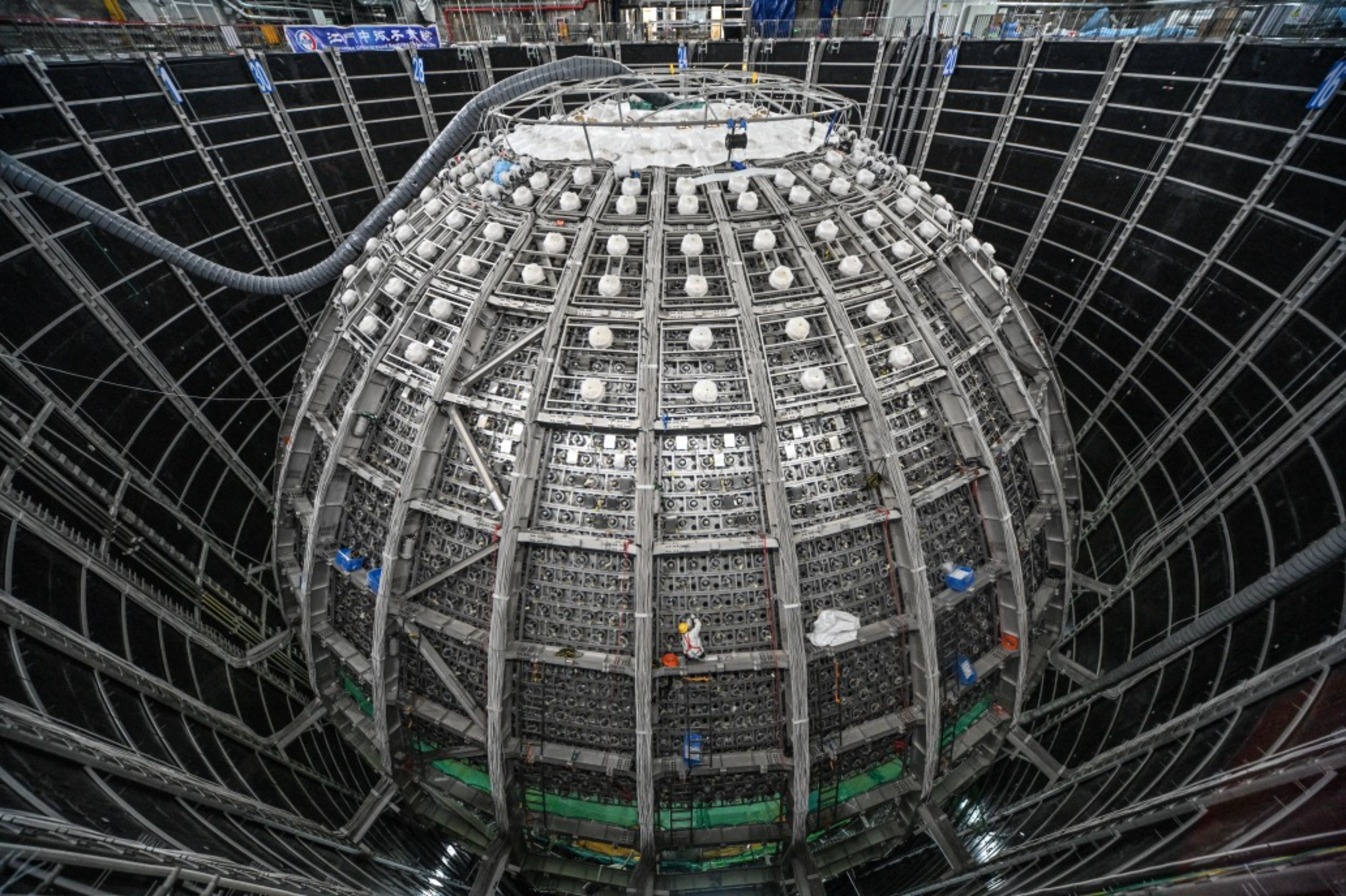
Another example of collaboration is the SVOM satellite ( French link ) dedicated to the study of gamma-ray bursts ( French link ) which will launch in March 2024. This is a Chinese project launched by the CAS and the Chinese Space Agency which France has been greatly involved in since 2014. France's involvement is led by the French Space Agency (CNES) as the main prime contractor and also involves 11 French laboratories, including 9 under the joint supervisory authority of the CNRS. Reynald Pain believes that this satellite equipped with many cutting-edge instruments and supported by a vast network of ground antennae and dedicated telescopes " will put China at the forefront of research into these gamma-ray bursts ".
Nonetheless, scientific cooperation with China can sometimes turn into forms of international competition. Reynald Pain recognises China's value in particle physics but remains cautious about other Franco-Chinese cooperation projects in this field. For example, a CAS laboratory aims to build a Circular Electron Positron Collider by 2040, a particle accelerator to be hosted in China in a circular underground tunnel of approximately 100 km in circumference. This instrument is in direct competition with the Future Circular Collider currently being developed by the European Organisation for Nuclear Research (CERN). The Director of IN2P3 is clear on this issue: " Our priority is to support the European project but this is not an obstacle to dialogue with our Chinese partners ". More generally, Philippe Arnaud believes that, " in an economy searching for new sources of development, Chinese R&D is confirming its willingness to work on technology transfer in a number of industrial and strategic sectors on a daily basis ". CAS laboratories and universities are often part of technology parks that also host business incubators and major Chinese industrial groups which of course greatly facilitates the rapid transfer of science towards innovation. In the light of this, as the director of the Beijing Office explains, " the internationally recognised breeding grounds for excellence in Chinese research also represent opportunities for very high-level partnerships. We can benefit by basing our work on more balanced scientific and human skills and exchanges while making sure to protect our own interests ".
The CNRS is the CAS's leading international partner ahead of the US Department of Energy, Harvard and the University of Tokyo . Bearing in mind the international competition situation discussed above, the CNRS identified four priority areas for cooperation when the framework agreement with the CAS was renewed. In addition to cooperation in particle physics, the CAS and CNRS agreed to structure their cooperation in fundamental and applied mathematics, set up a virtual centre to study biodiversity and the impact of climate change and continue their joint research into the oceans. These global challenges require the right responses. These can be achieved through reinforced structured scientific cooperation in a relationship of respect and trust with a scientific stakeholder who is at the forefront of world scientific research.
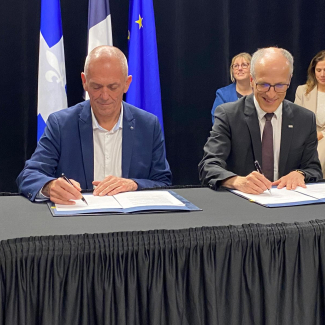
The CNRS has inaugurated its first IRC in Canada with the Université de Sherbrooke
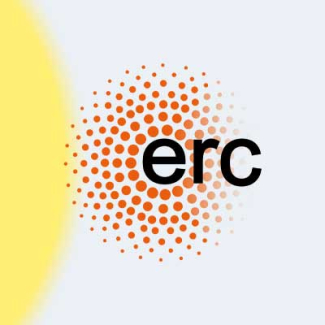
ERC Advanced Grant 2023 : winners hosted by CNRS
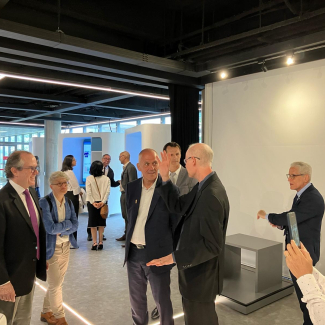
The CNRS has inaugurated the Maison du CNRS at the University of São Paulo
- Partager sur Facebook
- Partager sur Twitter
- Share on Linkedin
- Send by mail
- https://www.insb.cnrs.fr/fr/call-applications-i-bio-international-phd-program-2023-offering-4-phd-positions-biology
Call for applications | The i-Bio international PhD Program 2023 is offering 4 PhD positions in Biology with interdisciplinary approaches
Four positions are opened to join a fully funded 4-year innovative research program to work at the interface between biology and other scientific disciplines . This program comprises a pre-doctoral rotation year followed by a 3-year PhD .
The pre-doctoral year will consist in a rotational assignment of 3 consecutive missions of approximately 3 months each, in 3 separate laboratories of the Institut de Biologie Paris-Seine or Institut du Fer à Moulin on 3 different research projects. The selected candidates will have to write a short report at the end of each mission. This pre-doctoral year will provide the future doctoral students with a better scientific maturity and a good knowledge of the available interdisciplinary research projects available to do their PhD. During that year, the selected candidates will also have the opportunity to follow courses at Sorbonne University as auditors to acquire or deepen their skills in specific biological fields or in other scientific disciplines, and to benefit from the professional trainings listed in the catalog of Sorbonne University. The pre-doctoral contracts will be awarded for the year 2023-2024, under an employment contract with Sorbonne University with a salary equivalent to that of a doctoral contract. At the end of the pre-doctoral year, provided that the 3 research missions have been validated by an ad hoc committee, selected candidates will benefit from a 3-year i-Bio PhD contract starting as of October 1, 2024, without any additional evaluation step. They will choose their PhD project among those proposed by the 3 laboratories where they performed their rotation. Additionally, i-Bio PhD students will benefit from a variety of educational programs, top quality research facilities, training initiatives, international partnerships and conferences. They will also benefit from a financial support allowing them to buy personal equipments, register for conferences or carry out missions abroad.
- At the Paris-Seine Biology institute , or the Fer à Moulin institute in Paris, affiliated with Sorbonne University .
- Starting October 15 th 2023, for 4 years
- 1-year pre-doctoral experience with 3 successive rotational assignments of 3 months each, in 3 separate labs, starting October 15 th 2023
- 3-year PhD on one of the three projects, chosen at the end of the pre-doctoral year, starting October 1 st 2024
- List of pre-doctoral + PhD projects HERE .
- Students of any nationality holding a Master degree or equivalent
- Individuals highly motivated to work at the interface between biology and other disciplines
- Backgrounds in biology, chemistry, computational biology, engineering, mathematics or physics
- Candidates fill in the application form by March 16 th 2023 at 4 pm (UTC+1) – Download the application form – UPLOAD YOUR APPLICATION FILE
- 1 st round selection: evaluation of applications by the i-Bio Executive Committee
- 2 nd round selection: mid-May 2023, shortlisted candidates will be invited for a video-interview by a Selection Committee composed of scientific experts and representatives of the Doctoral Schools. Final results will be communicated by the end of May 2023.
Les autres opportunités
Appel à projet régional | soutien à la recherche en ile-de-france, appel à candidatures | grand prix halphen de la fondation philippe et maria halphen, appel à projets | equipes frm 2025.
Restez informé avec l'INSB
Découvrez les actualités de l’Institut des sciences biologiques
Imperial College London Imperial College London
Latest news.

GSK backs Imperial’s Fleming Initiative with £45m pledge to fight AMR

Imperial and University of São Paulo sign new research and education partnership

Chatham House report sets out recommendations for the next UK foreign secretary
- CNRS - Imperial IRC for Transformational Science and Technology
- Research groups
Imperial - CNRS Joint PhD Programme

Imperial – CNRS Joint PhD Programme – Call for Projects: Transformational Science and Technology
Imperial - CNRS Joint PhD Programme Call 2024 - Apply now
Imperial-CNRS Joint PhD Application 2024 OR Imperial-CNRS Joint PhD Application 2024 Word version
Imperial and Centre National de la Recherche Scientifique (CNRS) recognise that collaborative international activities enable cross-border pooling of research capabilities and sharing of expertise and facilities, the opportunity to appreciate different perspectives, outputs that are typically more highly cited, as well as access to new environments for impact and exploitation of research outcomes.
CNRS and Imperial are launching a fifth joint call for collaborative PhD proposals between the two institutions. The theme for this year’s call is Transformational Science and Technology. The call is intended to be open to all areas of science, technology, engineering and medicine. The aim is to develop collaborative PhD projects that can train and network the next generation of researchers and innovators, offering them expertise not available at just one institution, and to also seed Imperial-CNRS collaborations that can lead to Horizon Europe and other funding opportunities.
Imperial and CNRS now have 41 PhD students registered with the collaborative PhD programme working on high-impact UK-France projects.
This call invites Principal Investigators at CNRS and Imperial to jointly put forward a research project to be underpinned by x1 PhD at CNRS and x1 PhD at Imperial, which includes joint supervision plans and a built-in mobility programme. Support for CNRS-Imperial cohort-building activities and relevant training will also be provided each year.
Strategic rationale
Imperial College London and CNRS researchers have co-authored 2,753 publications in the past 5.5 years (2018-2023) and worked together on 43 joint Horizon 2020 research consortia, with 15 additional projects started under Horizon Europe.
The CNRS-Imperial International Research Centre (IRC) for Transformational Science and Technology launched in April 2022 , aims to deepen and expand connections between our two institutions to address UN Sustainable Development Goals. CNRS and Imperial have an additional three formal collaborations in place under the larger IRC: CNRS and Imperial have a joint International Research Laboratory (IRL) in Mathematics – the IRL Abraham De Moivre; Imperial is the UK lead for the CNRS International Research Network in Quantum Fields and Strings; and Imperial and CNRS have an International Research Project in Integrative Metabolism in collaboration with the University of Lille.
The €95.5 billion Horizon Europe budget, which runs from 2021-2027, provides continued impetus for joint scientific discovery and innovation.
The UK agreed a deal to associate to Horizon Europe on 7 September 2023. UK researchers can now apply for Horizon Europe funding, certain that all successful UK applicants will be covered through the UK’s association (or through the UKRI guarantee) for the remainder of the programme.
All calls in Work Programme 2024 will be covered by association, and the UK guarantee scheme will be extended to cover all calls under Work Programme 2023.
The model is for each collaborative project to have two PhD students and two supervisors, one of each at both Imperial and CNRS.
At CNRS the funding will be for a three-year studentship. Funds will include mobility costs for visits to London for the project over three years.
At Imperial , at least 75% of the funding for the three-year studentship must be allocated by the Imperial PI’s department or other funder (eg CDTs, DTPs, or other research groups, external funding). The central College will contribute 25% of the studentship plus mobility (approx. £24,000 total) per three-year project. These funds can be used to pay for 25% of the tuition and stipend, or as a studentship top-up for other uses, e.g for mobility, consumables, or other related costs to support the project. Given that co-investment is required to apply, Imperial applicants must submit confirmation (an email is sufficient) of funding for at least 75% of a studentship from the person who is responsible for the funding source of the studentship e.g if using a department studentship allocation then submit a note from the HoD or similar, if using a CDT studentship then submit a note from the Imperial CDT lead, etc.
Number of awards
Up to five projects are expected to be funded jointly by Imperial & CNRS.
Support period 3 years
Eligibility
- Scientists from Imperial who can supervise PhD students;
- Scientists working in a research lab affiliated to CNRS holding an accreditation to supervise PhD students (HDR)
- A PI cannot submit more than one application in the framework of this call.
There must be one PI from Imperial and one PI from a CNRS laboratory. Those who do not already have a collaborator may consult Imperial’s website or the CNRS website to find information on the research groups and projects being carried out in either institution.
Open date: 2 October 2023 Closing date: 1 December 2023 Notification date: February 2024
Beginning of the projects: October 2024
Apply now! Imperial-CNRS Joint PhD Application 2024 OR Imperial-CNRS Joint PhD Application 2024 Word version
Proposals will be evaluated and ranked by an Imperial-CNRS committee according to the following criteria:
- Scientific quality and originality of the project
- Scientific merit of the teams
- Synergy between the teams, added value of international cooperation
- Convincing plan for engaging PhD students in the research and for managing joint supervision
- Projects that are likely to be sustainable beyond the grant period
- Benefit to researcher based on their career stage
The proposals should also include an outlined plan for raising external competitive funding.
How to Apply
Imperial applicants should submit in electronic format (Microsoft Word or Adobe PDF) to [email protected];
CNRS applicants should submit the same file via the dedicated platform: https://noa.cnrs.fr/#/accueil (as several PhD Joint Programs are currently open for proposals, please make sure you select the correct call).
Click here to apply: Imperial-CNRS Joint PhD Application 2024 OR Imperial-CNRS Joint PhD Application 2024 Word version For questions, please contact the following :
Imperial College London: Mrs Heather S. Kerst, [email protected]
CNRS: Mr Carl Ialamov, [email protected]

- Share on FaceBook
- Share on Twitter
- Share on Linkedin
- Send by mail
- https://www.insmi.cnrs.fr/en/cnrsinfo/erc-advanced-grant-2023-french-laureates-mathematics
ERC Advanced Grant 2023: French laureates in mathematics
The European Research Council (ERC) has just announced the results of its "ERC Advanced Grant 2023" call for established researchers. In mathematics, five French projects have been rewarded.
The ERC Advanced Grants are designed to enable established scientists to propose a subject that represents a break with their current research activities, while remaining scientifically active. They are open to established researchers who have achieved significant results in their last ten years of research.
Advanced grants are awarded for a period of 5 years, and the selection criteria are based on the scientific excellence of the project and the researcher behind it. This places them at a higher level of experience than the ERC Starting Grants, which are aimed at project leaders who obtained their doctorate 2 to 7 years ago, and the ERC Consolidator Grants, which are aimed at researchers who obtained their doctorate 7 to 12 years ago.
Lauréats Advanced Grants 2023 :
To go further :.
- ERC Advanced Grant 2023 : winners hosted by CNRS
- Official communication from the European Research Council
- 1 UMR8088 - CNRS/CY Cergy Paris Université
- 2 UMR5669 - CNRS/ENS Lyon
- 3 UMR8553 - CNRS/École Normale Supérieur - PSL
- 4 UMR7598 - CNRS/Sorbonne Université/Université Paris Cité
- 5 UMR7586 - CNRS/Sorbonne Université/Université Paris Cité
On a trip to Mexico, the CNRS office takes part in the opening of a CEMCA exhibition and meets the Mexican coordinators of two CNRS IRP
- Publié le : 13 May, 2024
- Events , Institutional news , Research news

Visit to UNAM’s agrivoltaic station in Topilejo, south of Mexico City © Erell Gloaguen/CNRS
The CNRS office in Washington D.C., responsible for the United States and Mexico, visited Mexico City from Monday April 29 to Saturday May 4. The program for this mission included attending the opening of an exhibition by the Center for Mexican and Central American Studies (Centre d’études mexicaines et centraméricaines – CEMCA), taking part in workshops organized by the strategic orientation council of the Cultural Services of the French Embassy in Mexico, and meeting Mexican coordinators of two CNRS’s International Research Projects .
Opening of cemca exhibition on the río bec at the national museum of anthropology.

On Friday May 3, the CNRS office attended the opening of an exhibition on the Río Bec Maya site organized by the Center for Mexican and Central American Studies (Centre d’études mexicaines et centraméricaines – CEMCA), a joint unit of the French Research Institutes Abroad (UMIFRE) co-supervised by the CNRS and the French Ministry of Europe and Foreign Affairs.
The CEMCA, directed by Maya Collombon , Senior Lecturer in Political Science at Sciences Po Lyon, is a research center specializing in the humanities and social sciences, particularly anthropology, history, archaeology and sociology. CEMCA is also coordinating a CNRS International Research Project entitled FiG-ArO, alongside partners in France (Institut Français d’Études Andines and Université Paris 1 Panthéon-Sorbonne) and Mexico (the Fray Bernardo Padilla community museum in Chupicuaro, the La Alhondiga regional museum in Granaditas, the National Autonomous University of Mexico and the National Museum of Anthropology).
The temporary exhibition runs at the National Museum of Anthropology until July 28, 2024. One of the most important in Latin America, the National Museum of Anthropology covers 44,000 m² of exhibition space and is expected to welcome 2.6 million visitors in 2023. The museum houses artifacts and archaeological legacies from the pre-Hispanic civilizations of Mexico and Mesoamerica, and also represents the country’s current ethnic diversity. At its inauguration in 1964, André Malraux described the museum as “the most beautiful in the world” for the quality of its collections and the grandeur of its architecture.
The exhibition focuses on discoveries made at Río Bec, a Maya archaeological site located in the south of the Mexican state of Campeche, close to the neighboring state of Quintana Roo on the Yucatán peninsula. The site was excavated by archaeologists from Mexico’s National Institute of Anthropology and History, as well as by scientists from the CNRS, who revealed several architectural ensembles – unique in style among the Maya sites recorded in the region – and spread out over several kilometers. These archaeological remains and the artefacts they contain bear precious witness to the way of life and customs of the Mayan peoples who lived alongside them.
Participation in the Strategic Orientation Council of the Cultural Services of the French Embassy in Mexico
On Thursday May 2 and Friday May 3, the CNRS office took part in the biannual strategic orientation meeting of the Cultral Services of the French embassy in Mexico.
This working meeting enables the Cultural Services to define its strategic priorities in the cultural and scientific fields. Among the workshops on offer, the CNRS office was invited to take part in a working group on Franco-Mexican scientific cooperation, dedicated to biodiversity and ocean-related issues in the run-up to the next United Nations Ocean Conference in Nice (France) in June 2025. For the CNRS, this workshop was an opportunity to present its new role as pilot of the “Climate, Biodiversity, Sustainable Societies” program agency, which enables it to define a French scientific strategy in these fields and to lead research communities at national level. The role of the CNRS in ocean research and preservation was also highlighted, through the work carried out within various Priority Research Programs and Infrastructure (PEPR) and particularly the “Océan Climat” Priority Research Program , co-directed by the CNRS and Ifremer, which structures research by building or consolidating French leadership in this field. The CNRS office also presented the International Panel for Ocean Sustainability (IPOS) multilateral platform, established in 2022 and involving experts, scientists, civil society and other stakeholders.
During these two days of work, the CNRS office took part in workshops on university cooperation and cooperation in the field of heritage (an important area of Franco-Mexican cooperation for the CEMCA), enabling it to present the CNRS’s international tools.
Meetings with Mexican coordinators of CNRS IRP
As part of its mission to Mexico City, the CNRS visited the National Autonomous University of Mexico (UNAM), home to many Mexican coordinators of CNRS International Research Projects (IRP). UNAM is the CNRS’s leading partner in Mexico, and a partner of excellence for research in Latin America. With its 350,000 students and numerous campuses in Mexico and abroad, UNAM is the country’s largest public university and one of the world’s top 100 research universities. The CNRS has several partnerships with the university: 1 International Research Laboratory in mathematics, LaSol ; 4 IRP ; and 3 International Research Networks .
Discovering the National Scientific Laboratory for Research and Preservation of Cultural Heritage (LANCIC)
The CNRS office met José Luis Ruvalcaba Sil, coordinator of the National Scientific Laboratory for Research and Preservation of Cultural Heritage (LANCIC), located within the UNAM Institute of Physics. Dr. José Luis Ruvalcaba Sil is a member of the FiG-ArO (Figurines Chupícuaro. Corporality and domestic rituals in pre-Columbian Mexico) IRP, which brings together several research teams in France and Mexico, including the CEMCA, and aims to produce a body of knowledge on Chupícuaro figurines, emblematic objects of this important culture of ancient Mexico (between 600 BC and 250 AD).
At LANCIC, José Luis Ruvalcaba Sil coordinates the application of non-invasive methods to analyze the figurines, thus preserving their integrity. Advanced technologies, such as high-resolution and X-ray microscopy, enable detailed examination of the composition of the materials and pigments used, whatever the surface.

The laboratory takes an interdisciplinary approach, bringing together research teams in chemistry and physics with researchers in art history (traditional and contemporary) from other laboratories, as well as historians and museum curators. In the laboratory, for example, teams are working on codexes 1 dating back to 1540 and written in Nahuatl. They examine the colors and handwriting and share their findings with specialized historians. This interdisciplinary analysis enables comparisons to be made between archaeological finds from different sites, in order to understand the distribution of objects, the materials used, the year in which they were made, local traditions and rites…
What makes LANCIC so special is its high-tech, portable hardware. It is probably the only laboratory in the world with mobile capabilities, enabling it to go into any type of environment, including the most inaccessible, such as mountainsides or caves.
The BioPhysImmuno IRP, to improve understanding of fibrosis and cancer

Tatiana Fiordelisio, head of the LANSBIODYT laboratory (National Laboratory of Biomimetic Solutions for Diagnosis and Therapeutics) and professor in the Department of Comparative Neurophysiology at UNAM, then presented to the CNRS the work carried out within the BioPhysImmuno (Biophysics of the immune response during immune cell/partner cell interactions, in fibrosis and cancer) IRP, which she coordinates for the Mexican side. The IRP focuses on the cells involved in the interaction mechanisms between immune cells and their partner cells or targets. It studies the response of two cell types to mechanical information provided by the microenvironment over varying lengths of time, in order to dissect the role of the latter, particularly in the case of fibrosis (pulmonary and hepatic fibrosis), important pathologies in Mexico. The IRP also has a therapeutic aspect, in that it seeks to integrate these complex stimuli into the design of therapeutic choices, whether molecular or cellular.
In particular, the laboratory has created a physical model to understand why cancer cells can avoid the immune system: this is a natural killer cell migration chip, which recreates the cells’ microenvironment. The chip makes it possible to observe the activation and transmigration of natural killer cells, visualizing the migration of natural killer cells and cancer cells from one side to the other.
The laboratory also has a Micro and Nano Manufacturing Unit, where medical solutions are produced. These include chip molds for pancreatic ischia, bioreactors for organoids and microvalves for glaucoma.
From local agrivoltaic stations to a dedicated national program: Mexico, a committed partner in agrivoltaic research

Finally, the CNRS visited the UNAM Faculty of Veterinary Medicine and Animal Husbandry, which coordinates the Mexican part of the international consortium on agrivoltaics launched by the International Research Center (IRC) CNRS-UArizona for Global Grand Challenges . Agrivolatism, a technique for agricultural production and energy production by installing photovoltaic modules on top of agricultural crops, helps reconcile the objectives of the agricultural and energy transition, and reinforces the resilience of plants to climatic hazards. This initiative is supported by the CNRS and the University of Arizona as part of their joint partnership through the IRC. The research carried out as part of this initiative is intended for large-scale application and is of interest to regions of the world that are particularly vulnerable to climatic hazards. Mexico, Morocco, Kenya and Israel have already joined the initiative.
During the meeting, the University of Arizona’s representative at UNAM, José Lever, invited the CNRS office to visit the university’s agrivoltaic plot in the mountains south of Mexico City. The UNAM plot contains 24 plots of land under solar panels, and 6 outdoor plots for comparative purposes. These two environments enable us to grow plants under different conditions and observe the impact of sunlight, shade, frost and other weather phenomena on crops. Sensors are implanted in the soil of each batch to indicate soil temperature and humidity. The aim of the plot is to be totally self-sufficient in terms of agricultural production and green energy, as well as water storage and consumption.
The plot coordinators presented the CNRS office with several quantitative and qualitative studies demonstrating the benefits of agrivoltaic systems on plant growth. As part of this mountain station, UNAM has also set up partnerships with local growers, who have invaluable knowledge of local climatology and ways of growing crops at altitude. Students also benefit from this expertise.
Beyond the UNAM, Mexico at federal level is emerging as a key partner in the agrivoltaics initiative. Indeed, Mexico’s Ministry of Public Education (Secretaría de Educación Pública) is planning to set up a National Agrivoltaics Program , with the aim of encouraging pilot programs in the country’s higher education establishments, by integrating a national agrivoltaics program into Mexico’s common higher education space. The program involves pooling existing facilities at institutions in this network of higher education establishments, and encouraging them to adopt curricula related to agrivoltaics. An experiment is currently underway in the state of Sonora, where a dozen individual agrivoltaic plots provide farmers with both food and solar energy. Plots are coordinated by the Sonora Institute of Technology, in collaboration with farmers. The Mexican Ministry of Public Education has also established contacts with eight universities in the region and local communities, with the aim of involving more local players in the project.
- A codex is a notebook made up of handwritten pages bound together in book form. ↩︎
Share this article
Would you like to subscribe to the adn newsletter, similar news.

Le Fil de Marianne – May 2024
- Calls & collaboration opportunities
- Published: May 7, 2024

Activity report from the Office for Science and Technology of the French Embassy in the United States
- Institutional news
- Published: May 4, 2024

Transatlantic cooperation: three CNRS medal winners tell us about their international collaborations
- Research news , Testimonies
- Published: May 2, 2024

AdN Newsletter – April 2024
- AdN newsletter - Regional scientific watch
share this!
May 16, 2024
This article has been reviewed according to Science X's editorial process and policies . Editors have highlighted the following attributes while ensuring the content's credibility:
fact-checked
peer-reviewed publication
trusted source
A golden layer unlocks sharper imaging and faster scanning with X-rays
by Nanyang Technological University
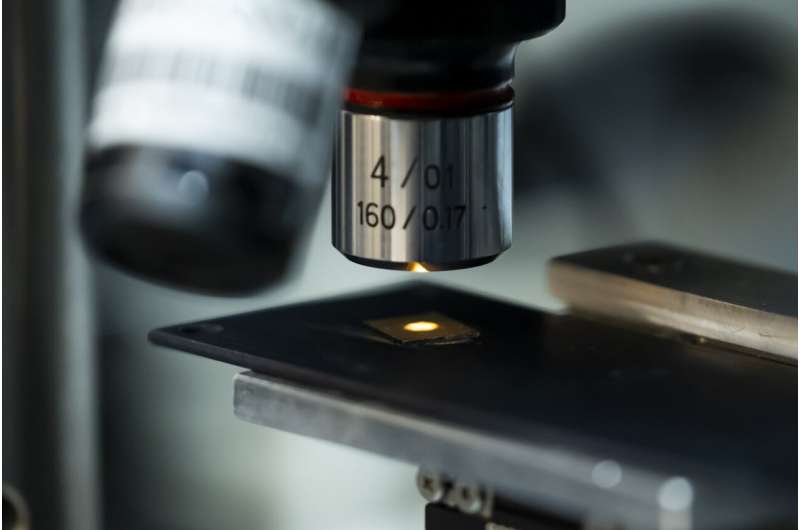
Scientists have made a breakthrough in significantly improving the sharpness of X-ray imaging and potentially boosting the speeds at which X-ray scans can be processed. This lays the groundwork for both better medical imaging and faster security clearance.
Key to the advance is a layer of gold added to devices that help visualize X-rays.
X-rays used in health and security scans are invisible, but they can be pictured using detectors that have "scintillating" materials that absorb the radiation and "light up" in a way similar to glow-in-the-dark paint. The visible light emitted by the scintillating materials is captured by sensors to create images based on the X-rays. The brighter the light, the sharper and more detailed the visuals.
The researchers, co-led by Nanyang Technological University, Singapore (NTU Singapore) and Poland's Lukasiewicz Research Network-PORT Polish Center for Technology Development, discovered that adding a gold layer to the scintillating materials made the visible light they gave off 120% brighter. On average the light emitted had an intensity of around 88 photons per kiloelectronvolt, data from the study published in Advanced Materials showed.
As a result, the X-ray images produced were, in general, 38% sharper and the ability to distinguish between different parts of the images was improved by 182%.
With the gold layer, the time the scintillating materials took to stop emitting light after absorbing the X-rays was also shortened by 1.3 nanoseconds on average, or nearly 38%, meaning they were ready for the next round of radiation more quickly. This suggests the potential for gold to speed up the processing of X-ray scans.
Rippling electrons
These boosts can be explained because gold is "plasmonic," meaning the electrons in the metal react to radiation by moving in synchronized wave-like patterns, akin to ripples forming after a pebble is dropped into water.
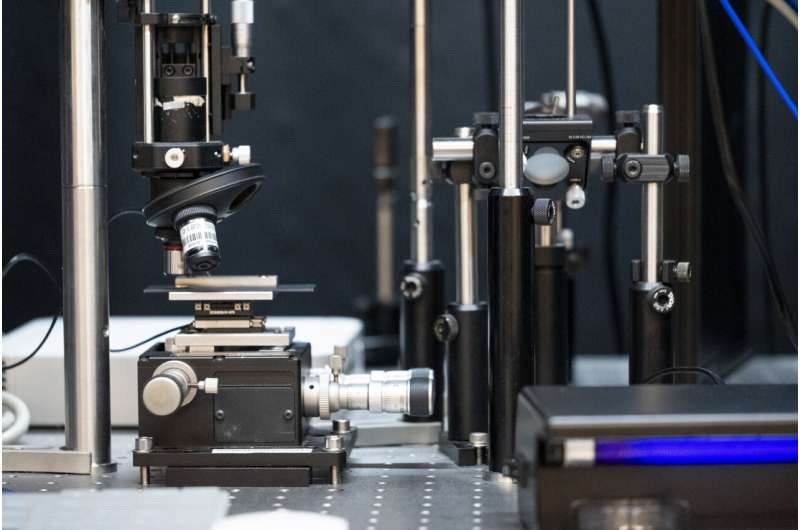
These rippling electrons, also called plasmons, can interact with scintillating materials to accelerate the emission of visible light by the materials after they react with X-rays. This then causes the light given off to become more intense.
This contrasts with non-plasmonic materials, whose electrons do not interact with radiation in the same way. As a result, they do not move in a coordinated wave-like manner and do not speed up visible light emission by scintillating materials.
For the research, the experiments used gold just 70 nanometers thick, or about 1,000 times thinner than a strand of hair. Using a thin layer of gold helps to keep material costs down and keeps the size of future X-ray detectors compact.
The researchers added the plasmonic gold layer to a scintillating material called butylammonium lead bromide, from the "perovskite" family of compounds. Perovskites are known for their ability to convert sunlight into electricity in solar cells.
This "nanoplasmonic" study was conducted in collaboration between the CNRS-International-NTU-Thales Research Alliance, an NTU-based French-Singaporean joint research laboratory; Institut Lumière Matière CNRS based in Université Claude Bernard Lyon 1 in France; and Nano Center Indonesia.
Nanyang Assistant Professor Wong Liang Jie, study co-lead from NTU Singapore's School of Electrical and Electronic Engineering, said, "Our results highlight the enormous potential of nanoplasmonics in optimizing ultra-fast imaging systems where high spatial resolution and high contrast are needed, such as X-ray bioimaging and microscopy."
Asst Prof Wong said that the improvements in X-ray detection demonstrated by the study stand to benefit airport security clearance too, as items in luggage might be more easily detected with crisper and higher-quality X-ray images, while bags could be screened more quickly.
Dr. Muhammad Danang Birowosuto, study co-lead from the Lukasiewicz Research Network-PORT Polish Center for Technology Development and a former NTU researcher, said, "Combining this improvement with other technologies will result in state-of-the-art functionalities in radiation imaging, such as to enhance X-ray analysis done in color or improve the accuracy of 'time-of-flight' X-ray medical imaging."
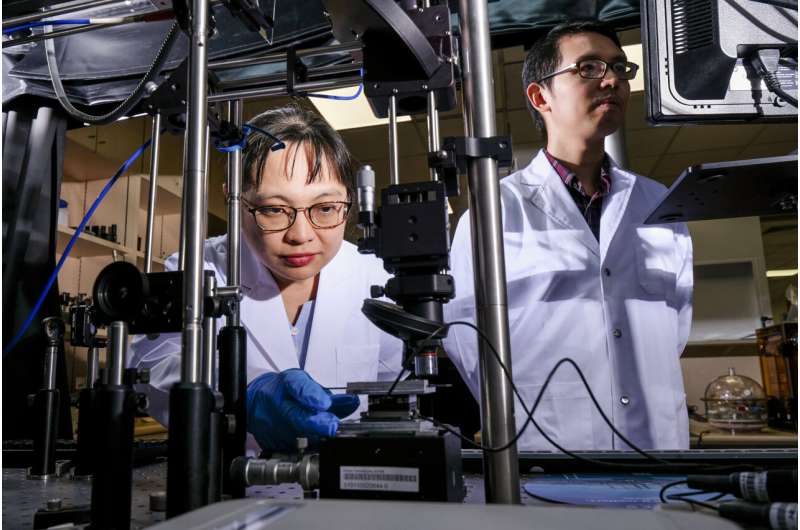
A spokesman for multinational corporation Thales said that "the idea of combining the physical phenomena of photonic structures—structures that change how light behaves—with scintillating materials for X-ray detectors represents an interesting concept to increase the efficiency of the current generation of detectors."
"Thales continues to monitor scientific advances in this area with great interest and welcomes Asst Prof Wong's breakthrough in this area," the spokesman added.
Golden opportunity
The inspiration to use gold as a plasmonic material together with scintillating materials arose from a marriage of two research areas that had not been explored before for X-ray detectors.
Members of the research team previously found that after certain substances absorbed visible light, they also gave off visible light, which could get brighter if thin plasmonic gold at the nanometer scale was added.
At the time, other members of the team, who study how nano-sized structures enhance X-ray generation, were also working on X-ray detection.
Looking at the nanoplasmonic findings, an idea struck the team: Since X-ray detection in X-ray scanners also depends on substances absorbing radiation to emit visible light, could nanoscale plasmonic materials augment detectors in these scanners?
The scientists then set out to prove this experimentally with gold.
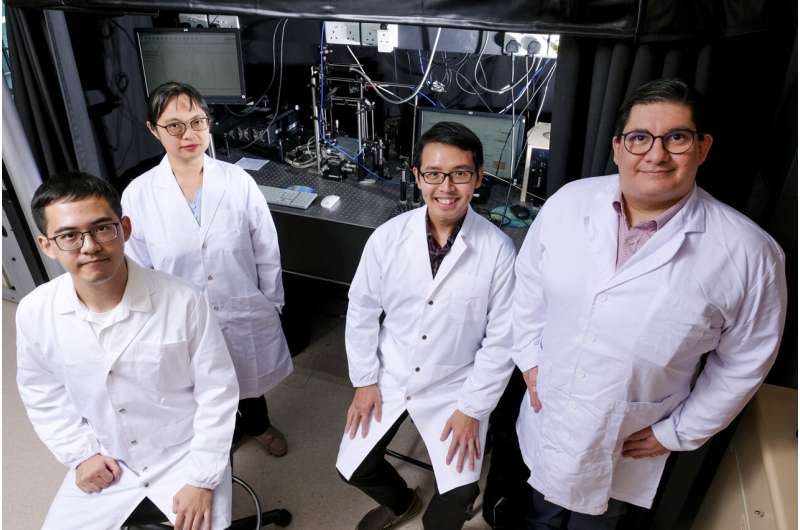
The researchers are next planning to add nano-sized notch-like patterns to the surface of the gold layer to boost the visible light given off by X-ray absorbing scintillating materials, as earlier research has shown that tiny notches can enhance visible light production.
Dr. Dennis Schaart, head of the medical physics and technology section in the radiation science and technology department at the Netherlands' Delft University of Technology, said that the findings "open a new avenue for the improvement of radiation imaging detectors based on scintillators."
Scintillators convert X-ray or gamma-ray photons into measurable light signals for applications such as medical imaging in computed tomography (CT) scans, non-destructive testing like those for quality assurance in industrial production, and security clearance using airport baggage scanners.
Dr. Schaart—who researches novel technologies for medical imaging and radiation oncology and was not involved in the study—said that the performance limits of commonly known scintillation mechanisms are close to being reached. But there remains a persistent demand for even better solutions.
"The findings presented in this latest research point the way towards a new class of scintillation detectors in which the intensity and speed of light emission are enhanced through the manipulation of quantum-mechanical phenomena," he said.
"In principle, this offers highly exciting prospects for scintillator developers to engineer optimal materials for a wide variety of applications. If the results presented in the research can be reproduced and scaled towards industrially produced scintillators, this will likely contribute to, for example, more accurate, more affordable and more accessible medical diagnosis, as well as faster security scans."
Journal information: Advanced Materials
Provided by Nanyang Technological University
Explore further
Feedback to editors

From roots to resilience: Investigating the vital role of microbes in coastal plant health
11 hours ago

Temperature, time and blueberry wine: Researchers examine fermentation's effects on health-promoting compounds

Heating proteins to body temperature reveals new drug targets


What fire ants can teach us about making better self-healing materials
12 hours ago

Robotic 'superlimbs' could help moonwalkers recover from falls

A novel multifunctional catalyst turns methane into valuable hydrocarbons
13 hours ago

NASA's Juno provides high-definition views of Europa's icy shell

New research addresses alleged benefits of a vegan diet for dogs

Trees on a university campus endure droughts with help from leaky pipes

First direct imaging of radioactive cesium atoms in environmental samples
14 hours ago
Relevant PhysicsForums posts
Transition frequency -> rydberg oxygen atoms.
May 14, 2024
Is Chern number exactly an integer of half-integer?
May 11, 2024
Coercive field in ferroelectrics perovskites
May 10, 2024
Flash memory and electron tunneling
May 8, 2024
How can I calculate spin Hall conductivity for a 4*4 Hamiltonian?
Apr 27, 2024
Hall effect in P-type semiconductors: electron-centric heuristic?
Apr 25, 2024
More from Atomic and Condensed Matter
Related Stories

Scintillating science: Researchers improve materials for radiation detection and imaging technology
May 8, 2023

Researchers can now accurately measure the emergence and damping of a plasmonic field

Team demonstrates an ultra-broadband tunable terahertz absorber of graphene and hierarchical plasmonic metamaterials
Apr 1, 2024

New lithium-based scintillator crystal for detecting radiation can distinguish between neutrons and gamma rays
Feb 9, 2023

Improvements in the material that converts X-rays into light could allow a tenfold signal enhancement
Feb 24, 2022

Single proton illuminates perovskite nanocrystal-based transmissive thin scintillators
Feb 1, 2024
Recommended for you

Engineering a new color palette for single-molecule imaging

Polyglycerol coating offers safer nanoparticle environmental remediation
16 hours ago

A thousand times smaller than a grain of sand—glass sensors 3D-printed on optical fiber
17 hours ago

Scientists from Prague are expanding the possibilities of using RNA in gene medicine

Uneven strain distribution induces detwinning in penta-twinned nanoparticles

Electron vortices in graphene detected for the first time
May 13, 2024
Let us know if there is a problem with our content
Use this form if you have come across a typo, inaccuracy or would like to send an edit request for the content on this page. For general inquiries, please use our contact form . For general feedback, use the public comments section below (please adhere to guidelines ).
Please select the most appropriate category to facilitate processing of your request
Thank you for taking time to provide your feedback to the editors.
Your feedback is important to us. However, we do not guarantee individual replies due to the high volume of messages.
E-mail the story
Your email address is used only to let the recipient know who sent the email. Neither your address nor the recipient's address will be used for any other purpose. The information you enter will appear in your e-mail message and is not retained by Phys.org in any form.
Newsletter sign up
Get weekly and/or daily updates delivered to your inbox. You can unsubscribe at any time and we'll never share your details to third parties.
More information Privacy policy
Donate and enjoy an ad-free experience
We keep our content available to everyone. Consider supporting Science X's mission by getting a premium account.
E-mail newsletter
Worldwide expert recommendations for the diagnosis and management of vitiligo: Position statement from the international Vitiligo Task Force-Part 2: Specific treatment recommendations
Affiliations.
- 1 Department of Dermatology and Pediatric Dermatology, National Reference Center for Rare Skin Disorders, Hospital Saint-André, ImmunoConcept, CNRS UMR 5164, Bordeaux University, Bordeaux, France.
- 2 Department of Dermatology, Ghent University Hospital, Ghent, Belgium.
- 3 Department of Dermatology and Pediatric Dermatology, National Reference Center for Rare Skin Disorders, Hospital Saint-André, BRIC, UMR 1312, Inserm, University Bordeaux, Bordeaux, France.
- 4 Department of Dermatology, Netherlands Institute for Pigment Disorders, Amsterdam University Medical Centers, Amsterdam Institute for Infection and Immunity, University of Amsterdam, Amsterdam, The Netherlands.
- 5 Department of Dermatology, University Hospital of Nice, Nice, France.
- 6 Department of Dermatology, The University of Texas Southwestern Medical Center, Dallas, Texas, USA.
- 7 Department of Dermatology, Henry Ford Health, Detroit, Michigan, USA.
- 8 Department of Dermatology, University Hospital Henri Mondor, EpiDermE EA 7379, Université Paris-Est Créteil Val de Marne, Créteil, France.
- 9 Department of Dermatology and Skin Science, University of British Columbia, Vancouver, British Columbia, Canada.
- 10 Department of Dermatology, Huashan Hospital, Fudan University, Shanghai, China.
- 11 Skin Research Institute of Singapore, ASTAR, Singapore, Singapore.
- 12 Department of Dermatology Integrated Medicine, Osaka University Graduate School of Medicine, Osaka, Japan.
- 13 Department of Dermatology, Yamagata University Faculty of Medicine, Yamagata, Japan.
- 14 Department of Dermatology, Tufts University School of Medicine, Boston, Massachusetts, USA.
- 15 Chroma Dermatology, Pigment and Skin of Colour Centre, Wheelers Hill, Victoria, Australia.
- 16 Department of Dermatology, The Royal Children's Hospital, Parkville, Victoria, Australia.
- 17 Department of Dermatology, Westville Hospital, Durban, South Africa.
- 18 Deutscher Vitiligo-Bund e.V., Adelsdorf, Germany.
- 19 Department of Dermatology, Venereology & Leprology, Postgraduate Institute of Medical Education and Research, Chandigarh, India.
- 20 Department of Dermatology, Kindai University Nara Hospital, Ikoma, Japan.
- 21 Vitiligo.nl, The Hague, The Netherlands.
- 22 Vitiligo International Patient Organisations, Paris, France.
- 23 Association Française du Vitiligo, Paris, France.
- 24 Department of Dermatology, Microbiology and Immunology, Robert H. Lurie Comprehensive Cancer Center, Northwestern University, Chicago, Illinois, USA.
- 25 Photodermatology and Vitiligo Treatment Unit, Israelite Hospital, Roma.
- 26 Department of Dermatology, College of Medicine, Dongguk University Ilsan Hospital, Goyang, Korea.
- 27 Department of Dermatology, Kaohsiung Medical University Hospital, Kaohsiung, Taiwan.
- 28 Pigmentation Research and Therapeutics, Osaka Metropolitan University, Osaka, Japan.
- 29 Department of Dermatology, Severance Hospital, Cutaneous Biology Research Institute, Yonsei University College of Medicine, Seoul, South Korea.
- 30 Department of Dermatology, University of Massachusetts Chan Medical School, Worcester, Massachusetts, USA.
- 31 Department of Dermatology and Venereology, All India Institute of Medical Sciences, New Delhi, India.
- 32 Vitiligo & Pigmentation Institute of Southern California, Los Angeles, California, USA.
- 33 Skin Physicians Pte Ltd, Singapore, Singapore.
- 34 Department of Dermatology, Jaslok Hospital and Research Hospital and South Mumbai Dermatology Clinic, Mumbai, India.
- 35 Department of Dermatology, Faculty of Medicine Cairo University, Cairo, Egypt.
- 36 New Cross Hospital, The Royal Wolverhampton NHS Trust, Wolverhampton, UK.
- 37 Department of Dermatology, University Hospital Münster, Münster, Germany.
- 38 Department of Dermatology, Mohammed V University, Ibn Sina University Hospital, Rabat, Morocco.
- 39 Department of Dermatology, Netherlands Institute for Pigment Disorders, Amsterdam University Medical Centers, Amsterdam Institute for Infection and Immunity, VU University, Amsterdam, The Netherlands.
- 40 Department of Dermatology, St. Vincent's Hospital, College of Medicine, The Catholic University of Korea, Seoul, South Korea.
- 41 Department of Dermatology, Clinica Dermatologica Moragas, Barcelona, Spain.
- 42 Dermatology, Andrology, and Venereology Department, Ain Shams University, Cairo, Egypt.
- 43 Unicamillus International University, Rome, Italy.
- PMID: 37715487
- DOI: 10.1111/jdv.19450
Background: The treatment of vitiligo can be challenging. Up-to-date agreed consensus recommendations on the use of topical and systemic therapies to facilitate the clinical management of vitiligo are currently lacking.
Objectives: To develop internationally agreed-upon expert-based recommendations for the treatment of vitiligo.
Methods: In this consensus statement, a consortium of 42 international vitiligo experts and four patient representatives participated in different online and live meetings to develop a consensus management strategy for vitiligo. At least two vitiligo experts summarized the evidence for different topics included in the algorithms. A survey was then given to a core group of eight experts to resolve the remaining issues. Subsequently, the recommendations were finalized and validated based on further input from the entire group during two live meetings.
Results: The recommendations provided summarize the latest evidence regarding the use of topical therapies (steroids, calcineurin inhibitors and Jak-inhibitors) and systemic therapies, including steroids and other systemic immunomodulating or antioxidant agents. The different modalities of phototherapies (NB-UVB, photochemotherapy, excimer devices and home phototherapy), which are often combined with other therapies, are also summarized. Interventional approaches as well as depigmentation strategies are presented for specific indications. Finally, the status of innovative and targeted therapies under development is discussed.
Conclusions: This international consensus statement culminated in expert-based clinical practice recommendations for the treatment of vitiligo. The development of new therapies is ongoing in vitiligo, and this will likely improve the future management of vitiligo, a disease that still has many unmet needs.
© 2023 The Authors. Journal of the European Academy of Dermatology and Venereology published by John Wiley & Sons Ltd on behalf of European Academy of Dermatology and Venereology.
- Combined Modality Therapy
- Photochemotherapy*
- Phototherapy
- Steroids / therapeutic use
- Treatment Outcome
- Ultraviolet Therapy*
- Vitiligo* / drug therapy
- Vitiligo* / therapy
Press release
Five exceptional researchers win L’Oréal-UNESCO For Women in Science International Awards 2024
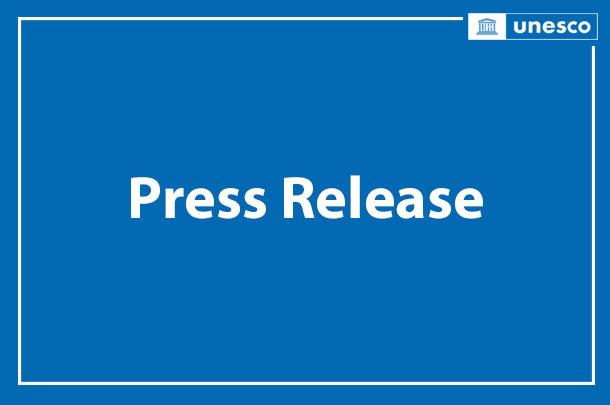
Every year, the L’Oréal-UNESCO For Women in Science International Awards honour an exceptional woman from each of the five broad regions: Africa and the Arab States; Asia and the Pacific; Europe; Latin America and the Caribbean; and North America.
The laureates of this 26th edition have been selected from among 350 candidates worldwide by an independent international jury chaired by Professor Brigitte L. Kieffer, Research Director at the Inserm Research Institute, member of the French Academy of Sciences and past laureate of L’Oréal-UNESCO For Women in Science International Awards.
Through the excellence of their work, these laureates demonstrate that science needs women now more than ever, for example to meet major public health challenges, at a time when cases of cancer could increase by 77% by 2050, obesity affects 1 in 8 people worldwide, and there are still more than 249 million cases of malaria infection.
LAUREATES OF THE L'ORÉAL-UNESCO INTERNATIONAL PRIZE FOR WOMEN IN SCIENCE
Laureate for africa and the arab states.
Professor Rose Leke - Immunology
Former Head of the Department of Infectious Diseases and Immunology, Faculty of Medicine and Biomedical Sciences, and Former Director of the Biotechnology Centre, University of Yaoundé 1, Cameroon
She is rewarded for her dedicated leadership, outstanding research and pioneering efforts to improve outcomes in pregnancy-associated malaria, support the eradication of polio and improve immunization in Africa, as well as for her efforts to improve the career path of young scientists. Dr Leke’s national, regional, and global influence has had a profound impact on public health in her native Cameroon and across Africa. Her achievements position her as a role model, leading educator and advocate for young female scientists.
LAUREATE FOR LATIN AMERICA AND THE CARIBBEAN
Professor Alicia Kowaltowski – Biochemistry
Professor of Biochemistry, University of São Paulo, Brazil
She is rewarded for her fundamental contribution to the biology of mitochondria, which are "the cell’s main energy source, acting as their batteries". Her work has been critical for our understanding of the implication of energy metabolism in chronic diseases, including obesity and diabetes, as well as in ageing. Her outstanding contribution as an investigator and mentor, as well as her advocacy for science in Latin America and its dissemination to the public, are an inspiration for young scientists.
LAUREATE FOR NORTH AMERICA
Professor Nada Jabado - Human genetics
Professor, Departments of Pediatrics and Human Genetics, Canada Research Chair Tier 1 in Pediatric Oncology, McGill University, Canada
She is rewarded for revolutionizing our comprehension of the genetic defects responsible for aggressive pediatric brain tumours. Her seminal discovery of the first-ever histone mutations in human disease, referred to as oncohistones, has sparked a fundamental change in the cancer research sphere. Through her innovative research and effective leadership in establishing a global collaborative network, she has reshaped the medical approach to pediatric cancer, advancing both diagnostic capabilities and clinical treatments for young patients.
LAUREATE FOR ASIA AND THE PACIFIC
Professor Nieng Yan - Structural biology
University Professor, School of Life Sciences, Tsinghua University; Founding President of Shenzhen Medical Academy of Research and Translation; Director of Shenzhen Bay Laboratory, China
She is rewarded for discovering the atomic structure of multiple membrane proteins that mediate the traffic of ions and sugars across the cell membrane, revealing principles that govern cross-membrane transport. Her exceptional research has informed multiple disorders such as epilepsy and arrhythmia and guided the treatment of pain syndrome. As a leading authority in her field, Dr Yan inspires female scientists globally and is a strong advocate for gender equality in research and science education.
LAUREATE FOR EUROPE
Professor Geneviève Almouzni - Molecular biology
Director of Research from The National Centre for Scientific Research (CNRS) at the Curie Institute, France
She is rewarded for her seminal contributions to understanding how DNA is packaged with proteins inside the cell nucleus. Her pioneering work in epigenetics has furthered our understanding of how cell identity is determined during normal development and disrupted by cancer. Her extraordinary successes in advancing research, training the next generation of scientists and promoting women in science are inspirational.
26 YEARS OF EMPOWERING WOMEN IN SCIENCE
Today, women still only account for one in three researchers globally (33%) according to UNESCO data. Furthermore, the glass ceiling remains a reality – in Europe only a quarter of scientific leadership roles are currently held by women. Since the creation of the Nobel Prizes for science in 1901, there have been only 25 female laureates.
For 26 years, UNESCO and the Fondation L’Oréal have worked together to promote gender equality in science through the For Women in Science International Awards and the Young Talents Programmes covering more than 140 countries, shining the spotlight on female scientists and contributing to breaking the glass ceiling in science. An sign of this is the remarkable increase (+150%) in the proportion of female laureates of the Nobel Prizes for science since 1998, compared to the previous period.
Since its creation, the L’Oréal–UNESCO For Women in Science programme has honoured more than 4 400 women for the excellence of their research, including 132 laureates of the International Awards and more than 4 000 young female researchers.
Among the laureates, 7 have received a Nobel Prize in science.
Empowering women in science is a question of equity and pragmatism. Women make up half of the population and it will take all of human ingenuity to tackle the daunting challenges we face, be it environmental degradation, climate and biodiversity disruption, pandemics, the technological divide or persistent poverty. It is encouraging to see a growing number of women among Nobel Prizes in science. Since 1901, 25 women have received this distinction, among them 15 since the creation of the L’Oréal-UNESCO For Women in Science programme in 1998. Six out of these 15 women had previously been recipients of the L’Oréal-UNESCO For Women in Science International Awards before being awarded the Nobel Prize.
A sustainable future for humanity depends on real equality between men and women. This is unfortunately still not the case today in science, although the world faces unprecedented challenges. The L’Oréal-UNESCO For Women in Science programme has ensured that this question has remained at the heart of the debate for 26 years. In particular, we have sought to raise the profile of research conducted by many exceptional women scientists and inspire the next generation of women researchers. The research completed by the five laureates of the 2024 International Awards delivers significant advances for the health of humanity and encourages us to continue the fight.
About UNESCO
With 194 Member States, the United Nations Educational, Scientific and Cultural Organization contributes to peace and security by leading multilateral cooperation on education, science, culture, communication and information. Headquartered in Paris, UNESCO has offices in 54 countries and employs over 2300 people. UNESCO oversees more than 2000 World Heritage sites, Biosphere Reserves and Global Geoparks; networks of Creative, Learning, Inclusive and Sustainable Cities; and over 13 000 associated schools, university chairs, training and research institutions. Its Director-General is Audrey Azoulay.
“Since wars begin in the minds of men, it is in the minds of men that the defenses of peace must be constructed” – UNESCO Constitution, 1945.
More information: www.unesco.org
About the Fondation L’Oréal
The Fondation L’Oréal supports and empowers women to shape their future and make a difference in society, focusing on three major areas: scientific research, inclusive beauty and climate action.
Since 1998, the L’Oréal-UNESCO For Women in Science programme has worked to empower more female scientists to overcome barriers to progression and participate in solving the great challenges of our time, for the benefit of all. For 26 years, it has supported more than 4400 women researchers from over 110 countries, rewarding scientific excellence and inspiring younger generations of women to pursue science as a career.
Convinced that beauty contributes to the process of rebuilding lives, the Fondation L’Oréal helps vulnerable women to improve their self-esteem through free beauty and wellness treatments. It also enables underprivileged women to gain access to employment with dedicated vocational beauty training. On average, around 16,000 people have access to these free treatments every year and more than 35,000 people have taken part in professional beauty training, since the beginning of the programme.
Finally, women are affected by persistent gender-based discrimination and inequalities, exacerbated by climate change. While they are on the frontline of the crisis, they remain under-represented in climate decision-making. The Women and Climate programme of the Fondation L’Oréal supports, in particular, women who are developing climate action projects addressing the urgent climate crisis and raises awareness of the importance of gender-sensitive climate solutions.
Media contacts
François Wibaux
+33 1 45 68 07 46
FONDATION L'ORÉAL
Hugo Berthoul : [email protected]
Victoria Daumesnil : [email protected] +33 683 002 780
Laurence Delval : [email protected] + 33 682 529 847
Juliette Jacovidis : [email protected] +33 648 498 315
Margaux Fievet : [email protected] +33 625 427 670
More information
Related items.
- Natural sciences
- Gender equality
- Lists and designations
- L'Oreal-UNESCO for Women in Science awards
- Women scientists
- Life sciences
- Environmental sciences
- UNESCO Office in Brasilia
- SDG: SDG 5 - Achieve gender equality and empower all women and girls
- See more add
This article is related to the United Nation’s Sustainable Development Goals .

Other recent press releases

Announcing NeurIPS 2023 Invited Talks
Communications Chairs 2023 2023 Conference invited-speakers
Presenting Eleven Speakers for Six Keynotes and One Panel
By Amir Globerson, Kate Saenko, Moritz Hardt, Sergey Levine and Comms Chair, Sahra Ghalebikesabi

NeurIPS Program Chairs are delighted to announce this year’s keynote speakers and schedule – all times listed are in CST and all invited talks will be held in Hall F. There are two invited talks during each day of the main program, with one on Monday during the opening of the conference. All keynotes will be recorded and will be available to the public in late January.
Schedule-at-a-Glance:
Monday – björn ommer at 5:25 – 6:15 pm 11 dec, tuesday – lora aroyo at 8:30 – 9:20 am 12 dec, tuesday – linda smith at 2:15 – 3:05 pm 12 dec, wednesday – jelani nelson at 8:30 – 9:20 am 13 dec, wednesday – beyond scaling panel at 2:15 – 3:15 pm 13 dec, thursday – christopher ré at 8:30 – 9:20 am 14 dec.
- Thursday – Susan Murphy at 2:15-3:05 pm 14 Dec
Alexander Rush will be moderating the Wednesday afternoon panel discussion, “Beyond Scaling,” with Aakanksha Chowdhery, Angela Fan, Percy Liang and Jie Tang . For more information about who is presenting and what the different invited talks will be about, read on for session abstract details and speaker bios.
Invited Speakers
On Monday at 5:25 pm CST, the invite talk track will kick off with the opening plenary presented by Björn Ommer who will discuss “ NextGenAI: The Delusion of Scaling and the Future of Generative AI .”
Abstract : The ultimate goal of computer vision and learning are models that can understand our (visual) world. Recently, learning such representations of our surroundings has been revolutionized by deep generative models. As this paradigm is becoming the core foundation for diverse novel approaches and practical applications it is profoundly changing the way we interact with, program, and solve problems with computers. However, most of the progress came from sizing up models – to the point where the necessary resources started to have profound detriments on future (academic) research, industry, and society.
This talk will contrast the most commonly used generative models to date and highlight the very specific limitations they have despite their enormous potential. We will then investigate mitigation strategies such as Stable Diffusion and recent follow-up work that significantly enhance the efficiency of democratizing AI. Subsequently, the talk will discuss lessons learned from this odyssey through model space, the interesting perspectives this casts on the future of generative modeling, and its implications on society.
Bio : Björn Ommer is a full professor at University of Munich where he is heading the Computer Vision & Learning Group. Before he was a full professor in the department of mathematics and computer science at Heidelberg University and a co-director of its Interdisciplinary Center for Scientific Computing. He received his diploma in computer science from University of Bonn, his PhD from ETH Zurich, and he was a postdoc at UC Berkeley.
Björn serves as an associate editor for IEEE T-PAMI. His research interests include semantic scene understanding and retrieval, generative AI and visual synthesis, self-supervised metric and representation learning, and explainable AI. Moreover, he is applying this basic research in interdisciplinary projects within neuroscience and the digital humanities. His group has published a series of generative approaches, including “VQGAN” and “Stable Diffusion”, which are now democratizing the creation of visual content and have already opened up an abundance of new directions in research, industry, the media, and beyond.
8:30 am CST Tuesday morning, Lora Aroyo will present “ The Many Faces of Responsible AI .”
Abstract : Conventional machine learning paradigms often rely on binary distinctions between positive and negative examples, disregarding the nuanced subjectivity that permeates real-world tasks and content. This simplistic dichotomy has served us well so far, but because it obscures the inherent diversity in human perspectives and opinions, as well as the inherent ambiguity of content and tasks, it poses limitations on model performance aligned with real-world expectations. This becomes even more critical when we study the impact and potential multifaceted risks associated with the adoption of emerging generative AI capabilities across different cultures and geographies. To address this, we argue that to achieve robust and responsible AI systems we need to shift our focus away from a single point of truth and weave in a diversity of perspectives in the data used by AI systems to ensure the trust, safety and reliability of model outputs.
In this talk, I present a number of data-centric use cases that illustrate the inherent ambiguity of content and natural diversity of human perspectives that cause unavoidable disagreement that needs to be treated as signal and not noise. This leads to a call for action to establish culturally-aware and society-centered research on impacts of data quality and data diversity for the purposes of training and evaluating ML models and fostering responsible AI deployment in diverse sociocultural contexts.
Bio : I am a research scientist at Google Research NYC where I work on Data Excellence for AI. My team DEER (Data Excellence for Evaluating Responsibly) is part of the Responsible AI (RAI) organization. Our work is focused on developing metrics and methodologies to measure the quality of human-labeled or machine-generated data. The specific scope of this work is for gathering and evaluation of adversarial data for Safety evaluation of Generative AI systems. I received MSc in Computer Science from Sofia University, Bulgaria , and PhD from Twente University, The Netherlands .
I am currently serving as a co-chair of the steering committee for the AAAI HCOMP conference series and I am a member of the DataPerf working group at MLCommons for benchmarking data-centric AI. Check out our data-centric challenge Adversarial Nibbler supported by Kaggle , Hugging Face and MLCommons . Prior to joining Google, I was a computer science professor heading the User-Centric Data Science research group at the VU University Amsterdam. Our team invented the CrowdTruth crowdsourcing method jointly with the Watson team at IBM. This method has been applied in various domains such as digital humanities, medical and online multimedia. I also guided the human-in-the-loop strategies as a Chief Scientist at a NY-based startup Tagasauris . Some of my prior community contributions include president of the User Modeling Society , program co-chair of The Web Conference 2023 , member of the ACM SIGCHI conferences board . For a list of my publications, please see my profile on Google Scholar .
2:15 pm CST Tuesday, Linda Smith will present, “ Coherence statistics, self-generated experience and why young humans are much smarter than current AI . ”
Abstract : The world presents massive amounts of data for learning. However much of that data is latent, only made manifest by physical action on a physical world. The structure of those actions and revealed data are tightly constrained by the continuity of time and space. In this talk, I will present evidence that the statistics of infant and child daily-life experiences at multiple timescales have a natural coherence structure that yields rapid learning and innovative generalization from sparse data and one-time experiences. A common simplifying assumption in AI is that the quantity of the data is all that matters: if enough data is amassed and aggregated, it will contain the latent structure necessary for optimal performance. The findings on the statistics of human ego-centric experience suggests that is assumption may be seriously off-the mark.
Bio: Linda B. Smith, Distinguished Professor at Indiana University Bloomington, is an i nternationally recognized leader in cognitive science and cognitive development. Taking a complex systems perspective, she seeks to understand the interdependencies among perceptual, motor and cognitive developments during the first three years of post-natal life. Using wearable sensors, including head-mounted cameras and motion sensors, she studies how the young learner’s own behavior creates the statistical structure of the learning environments with a current focus on developmentally changing visual statistics at the scale of everyday life and their role in motor, perceptual, and language development. The work has led to novel insights extended through collaborations in artificial intelligence and education. The work also motivates her current efforts on defining and promoting a precision (or individualized) developmental science, one that determines the multiple causes and interacting factors that create children’s individual developmental pathways. Smith received her PhD from the University of Pennsylvania in 1977 and immediately joined the faculty at Indiana University. Her work has been continuously funded by the National Science Foundation and/or the National Institutes of Health since 1978. She won the David E. Rumelhart Prize for Theoretical Contributions to Cognitive Science, the American Psychological Association Award for Distinguished Scientific Contributions, the William James Fellow Award from the American Psychological Society, the Norman Anderson Lifetime Achievement Award, and the Koffka Medal. She is an elected member of the National Academy of Sciences and the American Academy of Arts and Science.
8:30 am CST Wednesday morning, Jelani Nelson will present “ Sketching: core tools, learning-augmentation, and adaptive robustness .”
Abstract : ‘Sketches’ of data are memory-compressed summarizations that still allow answering useful queries, and as a tool have found use in algorithm design, optimization, machine learning, and more. This talk will give an overview of some core sketching tools and how they work, including recent advances. We also discuss a couple newly active areas of research, such as augmenting sketching algorithms with learned oracles in a way that provides provably enhanced performance guarantees, and designing robust sketches that maintain correctness even in the face of adaptive adversaries.
Bio: Jelani Nelson came to Berkeley in 2019 from Harvard University. He is a professor in the Department of Electrical Engineering and Computer Sciences. He was an Alfred P. Sloan Research Fellow and received a 2017 Presidential Early Career Award for Scientists and Engineers. “I find it fulfilling to work on algorithmic problems that are both practically relevant and simultaneously mathematically beautiful.”
Research Focus: Sketching and streaming algorithms for big data, and dimensionality-reduction techniques for high-dimensional data.
Join us at 2:15 pm Wednesday for the Beyond Scaling Panel moderated by Alexander Rush where a discussion with Aakanksha Chowdhery, Angela Fan, Percy Liang, and Jie Tang will take place in Hall F .
8:30 am CST Thursday, Christopher (Chris) Ré will discuss “ Systems for Foundation Models, and Foundation Models for Systems. ”
Abstract: I’m a simple creature. I fell in love with foundation models (FMs) because they radically improved data systems that I had been trying to build for a decade–and they are just awesome! This talk starts with my perspective about how FMs change the systems we build, focusing on what I call “death by a thousand cuts” problems. Roughly, these are problems in which each individual task looks easy, but the sheer variety and breadth of tasks make them hard.
The bulk of the talk is about understanding how to efficiently build foundation models. We describe trends in hardware accelerators from a perhaps unexpected viewpoint: database systems research. Databases have worried about optimizing IO – reads and writes within the memory hierarchy – since the 80s. In fact, optimizing IO led to Flash Attention for Transformers.
But are there more efficient architectures for foundation models than the Transformer? Maybe! I’ll describe a new class of architectures based on classical signal processing, exemplified by S4. These new architectures: are asymptotically more efficient than Transformers for long sequences, have achieved state-of-the-art quality on benchmarks like long range arena, and have been applied to images, text, DNA, audio, video. S4 will allow us to make mathematically precise connections to RNNs and CNNs. I’ll also describe new twists, such as, long filters, data-dependent convolutions, and gating, that power many of these amazing recent architectures including RWKV, S5, Mega, Hyena, and RetNet, and recent work to understand their fundamental limitations to hopefully make even more awesome foundation models! A github containing material from is under construction at https://github.com/HazyResearch/aisys-building-blocks. Please feel free to add to it!
Bio : Christopher (Chris) Re is an associate professor in the Department of Computer Science at Stanford University. He is in the Stanford AI Lab and is affiliated with the Machine Learning Group and the Center for Research on Foundation Models. His recent work is to understand how software and hardware systems will change because of machine learning along with a continuing, petulant drive to work on math problems. Research from his group has been incorporated into scientific and humanitarian efforts, such as the fight against human trafficking, along with products from technology and companies including Apple, Google, YouTube, and more. He has also cofounded companies, including Snorkel, SambaNova, and Together, and a venture firm, called Factory.
His family still brags that he received the MacArthur Foundation Fellowship, but his closest friends are confident that it was a mistake. His research contributions have spanned database theory, database systems, and machine learning, and his work has won best paper at a premier venue in each area, respectively, at PODS 2012, SIGMOD 2014, and ICML 2016. Due to great collaborators, he received the NeurIPS 2020 test-of-time award and the PODS 2022 test-of-time award. Due to great students, he received best paper at MIDL 2022, best paper runner up at ICLR22 and ICML22, and best student-paper runner up at UAI22.
Thursday – Susan Murph y at 2:15-3:05 pm 14 Dec
2:15 pm Thursday, Susan Murphy will discuss “ Online Reinforcement Learning in Digital Health Interventions .”
Abstract : In this talk I will discuss first solutions to some of the challenges we face in developing online RL algorithms for use in digital health interventions targeting patients struggling with health problems such as substance misuse, hypertension and bone marrow transplantation. Digital health raises a number of challenges to the RL community including different sets of actions, each set intended to impact patients over a different time scale; the need to learn both within an implementation and between implementations of the RL algorithm; noisy environments and a lack of mechanistic models. In all of these settings the online line algorithm must be stable and autonomous. Despite these challenges, RL, with careful initialization, with careful management of bias/variance tradeoff and by close collaboration with health scientists can be successful. We can make an impact!
Bio : Susan A. Murphy is Mallinckrodt Professor of Statistics and of Computer Science and Associate Faculty at the Kempner Institute, Harvard University. Her research focuses on improving sequential decision making in health, currently, online real-time learning algorithms for personalizing digital health interventions. She is a member of the US National Academy of Sciences and of the US National Academy of Medicine. In 2013 she was awarded a MacArthur Fellowship for her work on experimental designs to inform sequential decision making. She is a Fellow of the College on Problems in Drug Dependence, Past-President of the Institute of Mathematical Statistics, and a former editor of the Annals of Statistics.
Related Posts
2023 Conference
Announcing the NeurIPS 2023 Paper Awards
Reflections on the neurips 2023 ethics review process, neurips newsletter – november 2023.

IMAGES
VIDEO
COMMENTS
The CNRS initiates bilateral dialogues with major international research organizations through "PhD Joint Programmes". Each selected joint project will provide funding for a 3-year PhD scholarship, and mobility between France and the partner country. For each project, there will be two PI - one from the CNRS and one from the partner ...
L'appel à projets 2023 des International Research Project dans le domaine des sciences humaines et sociales est ouvert jusqu'au 5 mai 2023, 17h. L'outil de coopération internationale IRP ( International Research Project ) finance un projet de recherche collaborative entre des partenaires français et des partenaires d'un ou deux pays ...
L'appel à projet 2023 pour la création ou le renouvellement des International Research Project (IRP) ou des International Research Network (IRN) dans le domaine des sciences biologiques est ouvert du lundi 3 avril au mercredi 31 mai. Dans le but d'optimiser et de structurer la communication entre les chercheurs, le CNRS a développé une ...
International Research Network onPostcolonial Print Cultures (IRNPPC) The International Research Network on Postcolonial Print Cultures, funded by the CNRS (2023-2027) with additional funding from the University of Chicago Center in Paris (2023-25) brings together scholars working in the fields of postcolonial studies and literatures, book and ...
Campagne IRP - 2023 Page 1 sur 6 INTERNATIONAL RESEARCH PROJECT (IRP) 2023 FORMULAIRE DE DEPOT /TEMPLATE FOR APPLICATION 15 pages maximum Plus d'information sur les International Research Projects du CNRS, cliquez ici For more information on the International Research Projects of the CNRS, click here Le projet scientifique complet doit être rédigé en anglais et doit comporter les ...
SALTO is a strategic exchange programme between the Centre National de la Recherche Scientifique (CNRS) and the Max-Planck-Gesellschaft (MPG). The aim of this call for applications is to finance the mobility of young researchers in a Max Planck Institute in Germany as part of their research project over a period of 4 to 10 months.
2023-2024 Graduate Research Projects Scheme between The University of Melbourne (UoM) and The Centre National de la Recherche Scientifique (CNRS) Structure of Program Following sought after calls in 2019 and 2021, the CNRS and UoM are calling for proposals to establish joint PhD projects.
The 2023 call for projects for CNRS International Emerging Actions (IEAs) is now open to fund collaboration between international researchers and CNRS laboratories. Application deadline: September 28, 2023 ... Internationally recognised for the excellence of its scientific research, the CNRS is a reference in the world of research and ...
The panel that followed, made up of Dr Rémi Soummer (Director of the Optics Laboratory at the Space Telescope Science Institute and head of a CNRS International Research Project), Dr Manijeh Razeghi (Walter P. Murphy professor of Electrical and Computer Engineering, and director and founder of Center for Quantum Device at Northwestern ...
The "CNRS in Japan 2023" booklet, published by the CNRS Tokyo Office for Northeast Asia, gives a brief overview of CNRS cooperation with Japan. It presents various key figures of this cooperation, the list of structuring projects, a description of international research laboratories, the main support programs, as well as our strategic ...
UArizona was chosen by CNRS as its first International Research Center (IRC), CNRS's highest level of institutional cooperation. The IRC program aims to bridge disciplines to advance and scale up transformative research and revolutionary solutions for sustainability and resilience. Signed into existence on April 14, 2021, the IRC is the ...
a founding member of the five National Alliances for Research. International player (2022 figures) Almost 65% of CNRS co-publications are international. The CNRS contributes to the influence of French research in the . world through 80 IRL (International Research Laboratories) in 17 . countries, a network of (10) permanent offices in Brussels, New
Concours 2023 Researchers competitions / Candidate's guide 5 The CNRS is a public scientific and technological institution. Its mission is to identify, conduct or or-ganize any and all research which presents an in-terest in the advancement of science, as well as for economic, social and cultural progress, either on its own or with its partners.
2023 IRC Call for Proposals - OPEN. The France-Arizona Institute for Global Grand Challenges (CNRS & University of Arizona International Research Center) is issuing this call for proposals to support collaborative research in all disciplines. Each project will involve one CNRS-affiliated team and one UArizona team.
The CNRS has just opened its fourth International Research Centre (IRC), this time with the University of Chicago, one of its leading partners in the United States. The agreement to create the International Research Centre for Fundamental Scientific Discovery (IRC Discovery) was signed on 30 November in Washington DC, by the CNRS Chairman and ...
JUNO results from an international collaboration launched ten years ago and managed by the CAS, which French laboratories led by IN2P3 have been part of since the project began. CNRS researchers work on joint research and development involving scientific and technical study after which the teams construct and install the equipment required for ...
How are International Research Projects financed? In addition to the resources directly provided by the participating laboratories, International Research Programmes receive funds specifically earmarked by the CNRS for international mobility between teams and for organising meetings and field assignments, for a total amount comprised between ...
The pre-doctoral year will consist in a rotational assignment of 3 consecutive missions of approximately 3 months each, in 3 separate laboratories of the Institut de Biologie Paris-Seine or Institut du Fer à Moulin on 3 different research projects. The selected candidates will have to write a short report at the end of each mission. This pre-doctoral year will provide the future doctoral ...
Imperial College London and CNRS researchers have co-authored 2,753 publications in the past 5.5 years (2018-2023) and worked together on 43 joint Horizon 2020 research consortia, with 15 additional projects started under Horizon Europe. ... and Imperial and CNRS have an International Research Project in Integrative Metabolism in collaboration ...
This grand challenge emanates from the 2022 annual strategic meeting between UArizona and CNRS, where Habitability was selected as one of our first focus areas of research.In 2021, in the context of the annual joint Ph.D. program between CNRS and UArizona, which invites a variety of innovative proposals across disciplines, five exemplary proposals received were focused on aspects of Mars's ...
International Research Grants. Award Cycle: Annual Limit on Proposals per Principal Investigator (PI): An individual may participate as PI on one International Research Grant (IRG) per cycle and be awarded one IRG every four years. Next Due Date: September 28, 2022 Award Period: January 1 to December 31, 2023 Applications: Accepted through UA Competition Space
The European Research Council (ERC) has just announced the results of its "ERC Advanced Grant 2023" call for established researchers. In mathematics, five French projects have been rewarded. The ERC Advanced Grants are designed to enable established scientists to propose a subject that represents a break with their current research activities ...
The CNRS office in Washington D.C., responsible for the United States and Mexico, visited Mexico City from Monday April 29 to Saturday May 4. The program for this mission included attending the opening of an exhibition by the Center for Mexican and Central American Studies (Centre d'études mexicaines et centraméricaines - CEMCA), taking part in workshops organized by the strategic ...
For the research, the experiments used gold just 70 nanometers thick, or about 1,000 times thinner than a strand of hair. Using a thin layer of gold helps to keep material costs down and keeps the ...
This international consensus statement culminated in expert-based clinical practice recommendations for the treatment of vitiligo. The development of new therapies is ongoing in vitiligo, and this will likely improve the future management of vitiligo, a disease that still has many unmet needs.
UNESCO and the Fondation L'Oréal are proud to reveal the names of the five laureates of the 2024 L'Oréal-UNESCO For Women in Science International Awards. On 28 May, at UNESCO's headquarters in Paris, these researchers will be honoured for their pioneering research in life and environmental sciences, particularly this year for their major contribution to tackling global public health ...
The Neural Information Processing Systems Foundation is a non-profit corporation whose purpose is to foster the exchange of research advances in Artificial Intelligence and Machine Learning, principally by hosting an annual interdisciplinary academic conference with the highest ethical standards for a diverse and inclusive community.
Presenting Eleven Speakers for Six Keynotes and One Panel . By Amir Globerson, Kate Saenko, Moritz Hardt, Sergey Levine and Comms Chair, Sahra Ghalebikesabi . NeurIPS Program Chairs are delighted to announce this year's keynote speakers and schedule - all times listed are in CST and all invited talks will be held in Hall F. There are two invited talks during each day of the main program ...